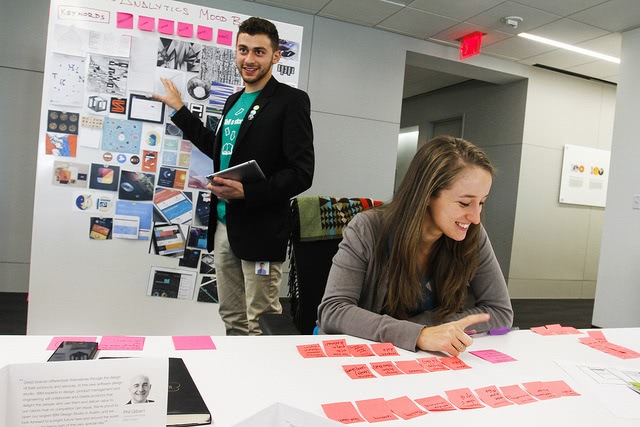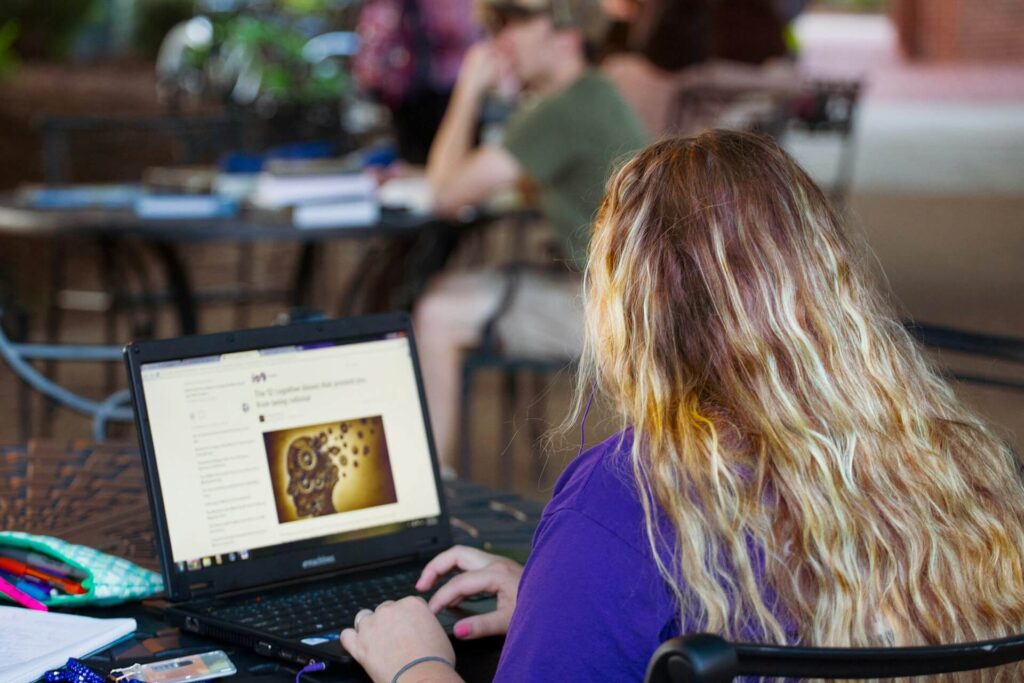
Source: Pixabay user bodobe.
Online coursework can be found in almost every subject area. From computer science to English, online programs cover pretty much everything. One program that is surprisingly popular is an online art degree.
From single, beginner-level classes for people who want to learn a new skill, to Masters of Fine Art programs, there are many ways to learn art through online courses.
Meet Autumn Wagner
We spoke with Autumn Wagner, a third-year student currently completing BFA degrees in illustration and graphic design through the Academy of Art University online. We wanted to see what it is that makes online art programming so appealing, and if it’s really “worth it”.

Image Courtesy of Autumn Wagner
Prior to enrolling at the Academy of Art, Autumn was a student at two different traditional, on-campus programs. But, she couldn’t shake the feeling that something just didn’t seem to fit.
“I got accepted to this college back in high school,” she says, “But I didn’t know online degrees existed until I was at my second traditional college and I looked at myself and realized that it wasn’t me and it wasn’t what I wanted. That’s when I really went back and looked at my options and got back into the Academy of Art as a possibility.”
What she likes the most about online learning
One of the most appealing aspects of online learning, she says, is her ability to live and learn where she wants. During her phone interview with the university, the admissions counselor suggested that the online program would be a viable option for her to get exactly what she wanted out of her college experience.
Another appealing aspect of completing an online art degree, for Autumn, was that she could still work while completing her two BFA degrees. Completing two degrees would be a lot for any student. So, how does she balance work along with all of her schooling? It’s all about time management.
Because the program is online, Autumn can schedule her days without worrying about class times. She tailored her work schedule to fit her preferred learning style. Now, she works in the mornings and devotes her afternoons and evenings to her classes. Autumn doesn’t have to worry about getting sucked into her studies.

An example of Autumn’s work provided by Autumn Wagner
“It’s really relaxing,” she says. “I’m able to do things on my own time so there are no boundaries.”
Each week Autumn logs in on Monday to check her weekly assignments. That includes online readings (modules), textbook readings, reading quizzes, discussion questions and projects. Everything is due on the following Sunday. Making sure that you are on top of your work is vital. Especially when it comes to putting your out your best product.
As an art student, a large portion of class time, and improving your skillset, involves critiquing others work and having yours critiqued. But if they’re never in an actual classroom, how do online students get the same experience?
Students critique each other through discussion groups which gives students an opportunity to get feedback and improve their work overtime.
“Never feel like your first submission is your last one.”
Professors suggest that students have their projects done by Friday. That way, there is time for everyone to critique and be critiqued. Then students have time to make changes based on the feedback they receive. That way when it comes time for them to evaluate it, everyone is sure they’ve put out the best possible product.
As with all kinds of art classes, evaluation is very subjective.
According to Autumn, your submissions are evaluated based on the amount of effort that’s apparent in your work. “Especially with graphic design, your professors can tell if you’ve put maybe two hours into it or if you’ve put 15 hours into it,” she says.
Online critiques have some other great benefits that students in a traditional setting may miss out on. Students are taking classes all over the world. Thus, Autumn believes that she receives broader perspectives than she may have with a traditional program.
“It’s amazing to see where everybody finds their interest and inspiration.”
Critiques aren’t the only aspect of online art classes that are different from traditional art classes. She says that one of the biggest changes she’s seen in herself since switching to online classes has been with her time management skills. “You have to keep yourself grounded more because you have to make the time to log into the classes to do the modules and the quizzes and the assignments,” Autumn explains. “You’re not given a schedule to be in class from this time to this time so you have to make sure that you’re on top of your time management and schedule every day.”
If you’re considering completing your own art degree online, Autumn will be the first to encourage you to do it. But she firmly believes that you should really be honest with yourself about your commitment to put in the required amount of work. “Really set yourself a schedule because if you can’t manage your time, online classes aren’t for you,” she says.
Are there any drawbacks?

An example of Autumn’s graphic design work provided by Autumn
So what are the drawbacks to earning an art degree online? For Autumn, there actually aren’t many.
The biggest issue is the occasional breakdown in communication. There are professors located in San Francisco and teaching both online and on-campus classes. Unfortunately, they aren’t always able to respond right away. Thankfully, the classes are set up in such a way that another student can usually respond to your questions quickly.
Autumn also says that feeling like you’re missing out on the college life experience can be difficult. However, having attended two different traditional colleges in her area, she feels like she can make up for it by staying close with friends she already had or made at work.
For Autumn, those things are small potatoes compared to all the benefits she sees with her online degrees. She creates a schedule that allows her to spend as much time as possible studying and creating without interruption. Autumn also has her own studio space, as opposed to sharing a space with several other students. She has also met students from around the world that she considers friends and pen pals whom she may have never met in a traditional setting.





